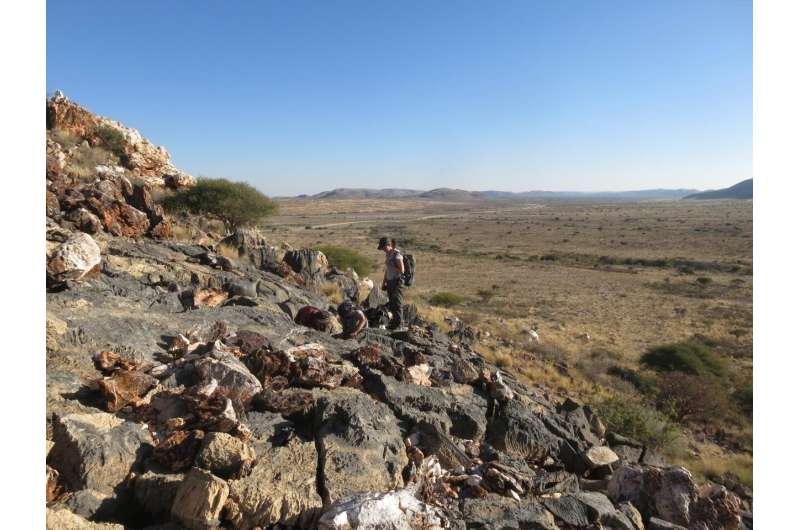Fossils' soft tissues helping to solve puzzle that vexed Darwin

Remarkably well-preserved fossils are helping scientists unravel a mystery about the origins of early animals that puzzled Charles Darwin.
Analysis of the 547 million-year-old remains has enabled researchers to trace the ancestry of some of the world's earliest animals further back than ever before.
Their study has uncovered the first known link between animals that evolved during the so-called Cambrian Explosion some 540 million-years-ago and one of their early ancestors.
Until recently, little was known about the origins of animals that evolved during the Cambrian event because of a lack of well-preserved fossil evidence.
The mysterious origins of animals that evolved at this time—when the diversity of life on Earth increased rapidly, giving rise to almost all modern-day animal groups—baffled 19th century naturalist Charles Darwin. It is often referred to as Darwin's dilemma.
Prior to the new study, it had proven difficult to trace links with earlier animals because their soft tissues—which provide vital clues about the animals' ancestry—almost always break down over time.
During fieldwork in Namibia, scientists from the University of Edinburgh unearthed the fossil remains of tiny animals—known as Namacalathus—that resemble a pin cushion attached to a short stalk.
Using an X-ray imaging technique, the team found some of the animals' soft tissues immaculately preserved inside the fossils by a metallic mineral called pyrite. Until now, scientists had only ever identified skeletal remains of Namacalathus.
Studying the soft tissues—and comparing them with those in animals that evolved later—revealed that Namacalathus was an early ancestor of species that appeared during the Cambrian Explosion. Among them are types of prehistoric worms and molluscs.
The study, published in the journal Science Advances, was funded by the Natural Environment Research Council. The work also involved a researcher from Lomonosov Moscow State University, Russia.
Professor Rachel Wood, of the University of Edinburgh's School of GeoSciences, said: "These are exceptional fossils, which give us a glimpse into the biological affinity of some of the oldest animals.
"They help us trace the roots of the Cambrian Explosion and the origin of modern animal groups. Such preservation opens up many new avenues of research into the history of life which was previously not possible."
More information: A. J. Shore et al, Ediacaran metazoan reveals lophotrochozoan affinity and deepens root of Cambrian Explosion, Science Advances (2021). DOI: 10.1126/sciadv.abf2933
Journal information: Science Advances
Provided by University of Edinburgh





















